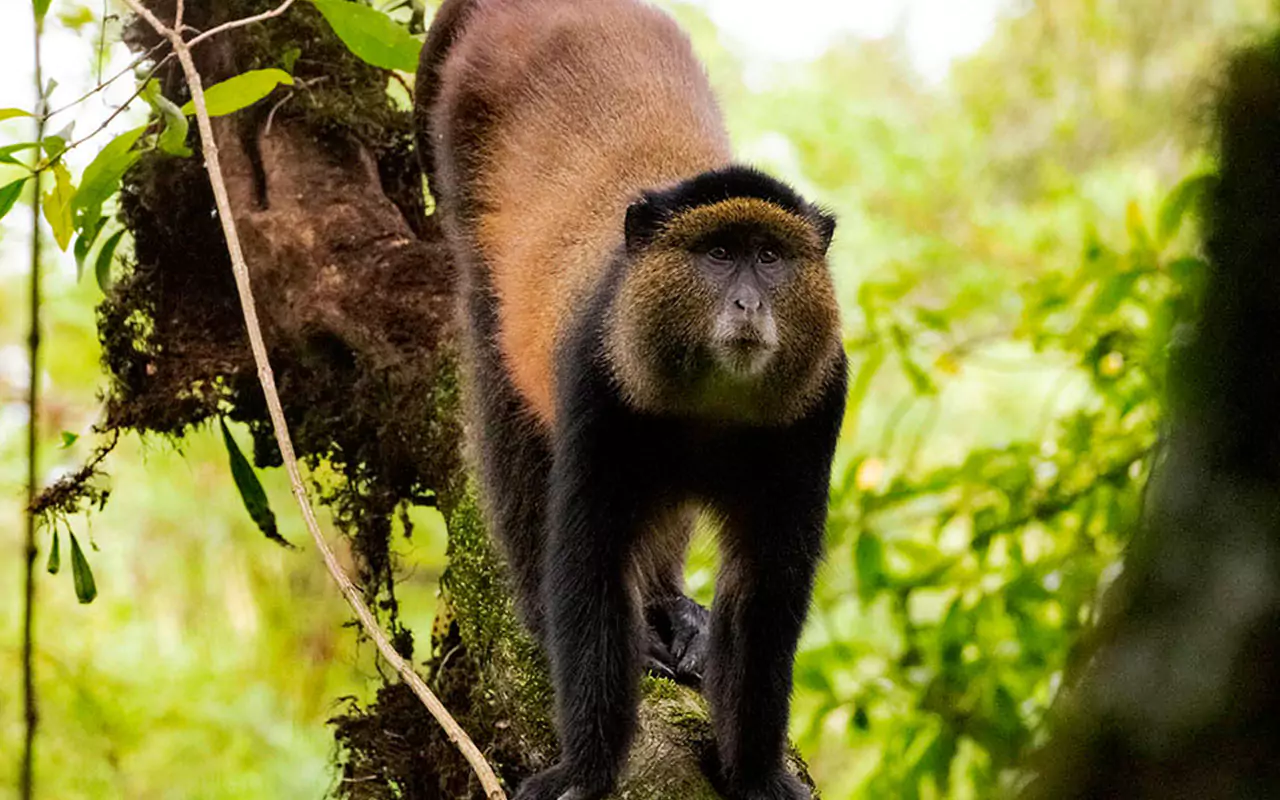Gishwati-Mukura national park is located in Rwanda. This is Rwanda’s newest park formed in 2015 and the fourth national park made of two forests, the larger Gishwati and smaller Mukura. Gishwati-Mukura is located on a ridge that divided Congo and Nile water areas on the Albertine rift in western part of Rwanda.
The national park covers an area of 13.2 square kilometers occupying districts of Rutsiro and Ngororero.
The national park hosts about 60 tree species including bamboo and hardwood. 20 groups of chimpanzees including blue monkeys, golden monkeys, baboons, Vervet monkeys, black and white colobus monkeys and L’hoest’s monkeys. Home to over 232 different bird species 163 of which are Albertine rift endemic species. Some of the birds are white-headed wood Hooper, old world warbler, mountain yellow warbler, handsome francolin, black-faced apalis, and purple-breasted sunbird. Animals in the national park include serval cats, tree hyraxes, black-fronted duiker, bushbucks, and red hogs.
Gishwati-Mukura national park is made up of two forests that is the large and small Mukura. Gishwati was once part of a large forest that stretched to Nyungwe forest in Uganda and Congo.
Attractions in Gishwati Mukura National Park.
Bird watching.
Gishwati-Mukura national park is one of the best places to see birds in Rwanda. The place hosts over 83 bird species 15 of which are Albertine endemic. These birds include Ruwenzori turaco, crowned crane, Ruwenzori Batis, red-throated Alethe, weaver birds, stripe-breasted, mountain yellow warblers, and grey crowned crane. Birding is done on foot because the park is tiny, you can as well ask the guide to help you identify different species of birds.
Primate trekking.
The national park had a small number of primates due to poaching and habitat loss. But currently, they have started to rise. Some of the primates that can be spotted are baboons, blue monkeys, chimpanzees and L’Hoest’s monkeys. Some of these primates have been habituated to enable visitors to trek them. Gishwati is soon becoming the best place where you can do chimpanzee trekking at all times. On a lucky day, you can also spot animals like duikers, forest birds and wild cats while you watch primates.
Guided nature walks.
The park has different trails taken by tourists that enable them to explore the forest. You are overwhelmed by the inner parts of the forests and their inhabitants like primates, butterflies, chameleons, and other insects. The environment is calm and peaceful filled by sounds from birds and primates.
While in the forest a guide will help you identify different tree species like orchids, mahogany, Kilimand, and Macaranga. The most interesting trail is the one that takes you to Kazeneza waterfall in the middle of the park. you are amused by the beauty of the waterfall and different surroundings.
Cultural encounters.
These cultural encounters are conducted and emphasized to give back to surrounding communities. They involve visiting local people that surround the park. tourists can learn and engage in different activities like making traditional food, and model local crafts. Attend traditional dance performances that include storytelling, dance and drama and songs.
When to visit Gishwati-Mukura National Park?
The best time to visit Gishwati-Mukura National Park is from June to September as these are dry months of the year, perfect for forest walks and primate trekking in the thick jungles.



